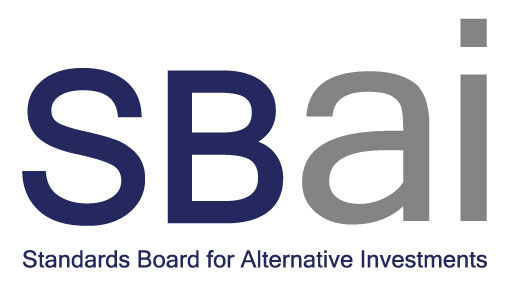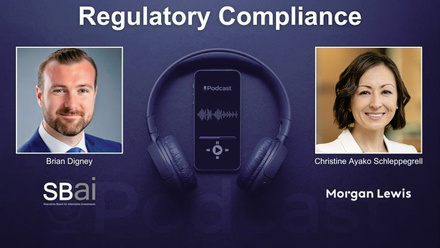SBAI welcomes findings of recent supervisory stress tests in the US and Europe
Both the Commodities Futures Trading Commission (CFTC) and the European Securities and Markets Authority (ESMA) have announced the outcomes of recent (separately conducted) supervisory stress tests (SST) of Derivative Clearing Organisations (DCO) / Central Counterparties (CCPs) with positive results.
- CFTC concluded that “all DCOs [tested] hold sufficient financial resources to withstand many extreme and often implausible price shocks, along with multiple defaults of their [clearing members (CMs)]. In some cases, DCOs can withstand the default of all CMs that have losses resulting from highly implausible price shocks”.1 These tests were a major expansion of the prior SST in 2019 and included nine DCOs, representing 11 clearing services across four asset classes: futures and options on futures, cleared interest rate swaps, credit default swaps, and foreign exchange products.
- ESMA’s results confirmed “overall resilience of European clearing landscape” to severe credit and liquidity stress scenarios, but also identified areas for future strengthening – notably for commodity derivative positions.2 New in this year’s exercise was exploratory analysis of climate risk, additional market stress scenarios, enhanced model risk assessment for concentration, and extended reverse stress tests for credit and liquidity. A total of 16 CCPs were covered, including two third country (UK) Tier 2 CCPs.
These are welcomed findings in light of concerns raised by global regulators about potential risks emanating from non-bank financial institutions (NBFI). While clearing houses and CCPs play an important role in financial markets by reducing the counterparty credit risks that market participants (banks and NBFI) face, they potentially also concentrate risks – hence recent regulatory focus on resilience, financial resources and liquidity, as well as risk management and resolution.
We, at the SBAI, support the regulatory community in their efforts to understand and address any potential systemic risk, and have a long history of engagement on these matters through IOSCO, direct responses to regulatory consultations, as well as by providing transparency tools and standards that address financial stability concerns.3 This includes welcoming the suggestion by the Chair of the Financial Stability Board (FSB), Klaas Knot, to enhance data collection from banking entities regarding their exposure to NBFI in light of the collapse of Silicon Valley Bank, as well as excessive risk-taking by Credit Suisse vis a vis the Archegos family office.4
How the SBAI supports a better understanding of financial stability concerns
The SBAI provides a wide range of transparency tools and Standards that help address financial stability concerns. The SBAI’s approach has been multipronged: our Standards and guidance extensively cover areas such as risk management, valuation, and disclosure at the level of individual fund managers.
We would like to highlight two particularly important components:
- Manager Disclosure to Prime Broker Counterparties: In 2008, the SBAI endorsed the recommendation of the Counterparty Risk Management Policy Group II (CRMPG II) and adopted a Standard that ensures that managers provide pre-agreed information reports to counterparties in a timely manner, to enable adequate risk management by these counterparties.
- Open Protocol Risk Reporting: In 2017, the SBAI adopted the Open Protocol risk reporting template, which provides extensive risk information to investors, including detailed gross long and short exposures of investment managers, alongside counterparty risk and stress test results.5 Funds accounting for over USD 2tn in assets voluntarily provide Open Protocol Reports to their investors, who can then easily aggregate this information for their risk management purposes. The SBAI has encouraged financial regulators around the globe, including IOSCO, to adopt or recommend Open Protocol or at least incorporate elements in their own risk reporting frameworks.
Separately, the SBAI has developed a financial stability dashboard which highlights how regulators can undertake analysis for potential systemic risk concerns arising from hedge fund activity within their own data collection efforts. This dashboard was most recently included in our response to ESMA’s consultation on Leverage Risk in 2020 and has been presented to many financial authorities.6
One particular recommendation we continually made is that rather than focusing on collecting (and aggregating) data from thousands of investment managers spread across multiple jurisdictions globally through inconsistent national reporting templates, prudential (banking) regulators should undertake more targeted data collection efforts by focusing on the much smaller universe of banking entities that actually interact with the NBFI. Such an approach would be far less cumbersome and also could provide additional insight into important aspects, such as margining and risk management practices by such entities.
_________________________________
1See CFTC notice on stress tests: https://www.cftc.gov/PressRoom/PressReleases/8929-24
2See ESMA notice on stress tests: https://www.esma.europa.eu/press-news/esma-news/esmas-stress-test-central-counterparties-finds-clearing-system-resilient
3See SBAI regulatory engagement on financial stability: https://www.sbai.org/regulatory-engagement/financial-stability.html
4See SBAI article on financial stability and data: https://www.sbai.org/resource/financial-stability-better-data-from-banks-to-assess-potential-systemic-risk.html
5The Open Protocol was first adopted in 2017 and has been updated continually since. Learn more and access the Open Protocol risk reporting template here: https://www.sbai.org/toolbox/open-protocol.html
6See SBAI Response to ESMA Consultation on Leverage Risks here: https://www.sbai.org/resource/sbai-responds-to-esma-consultation-on-leverage-risks.html




